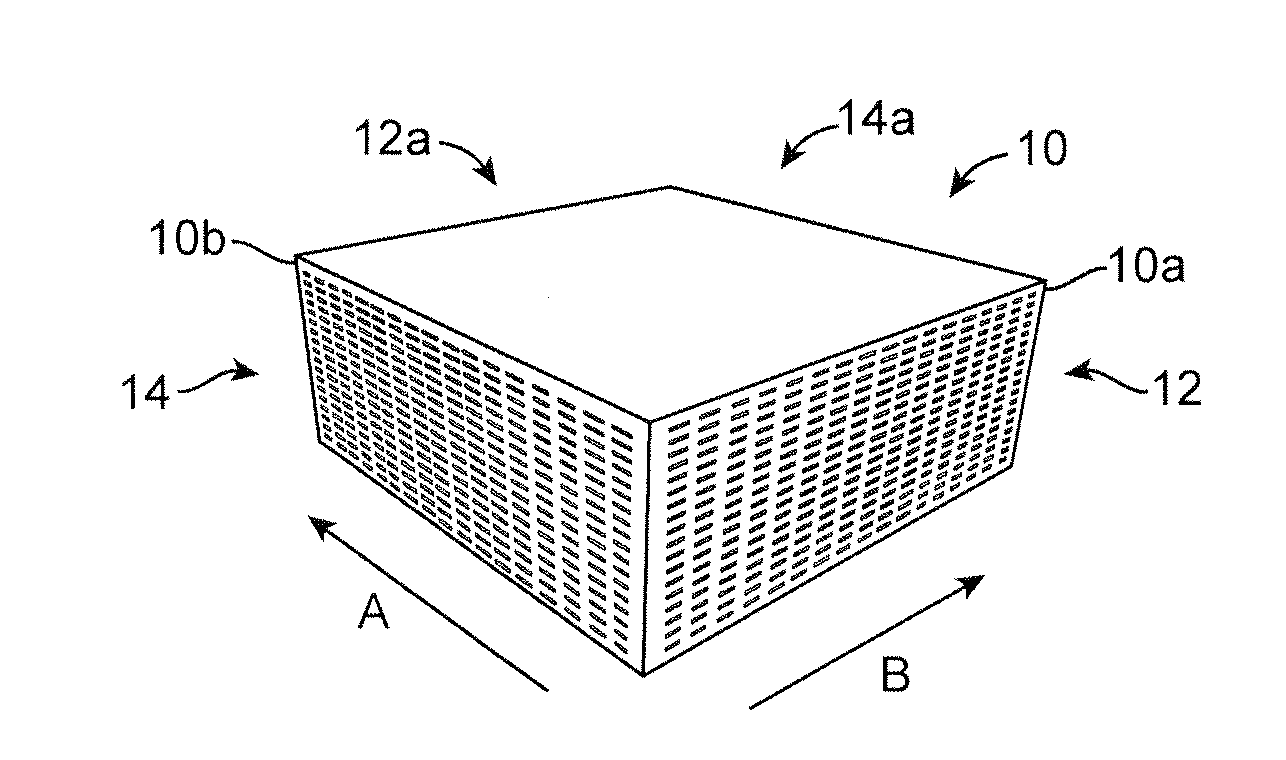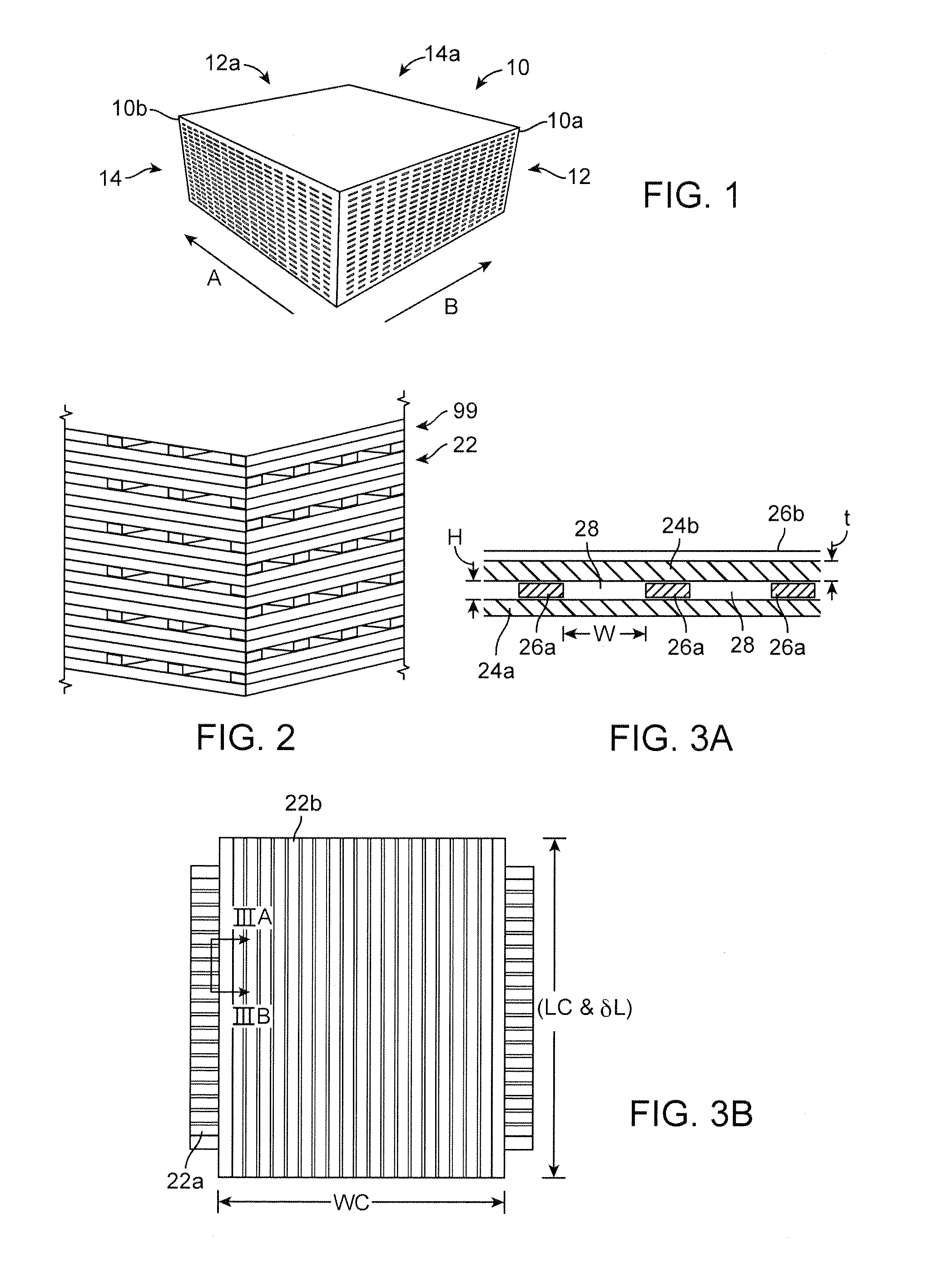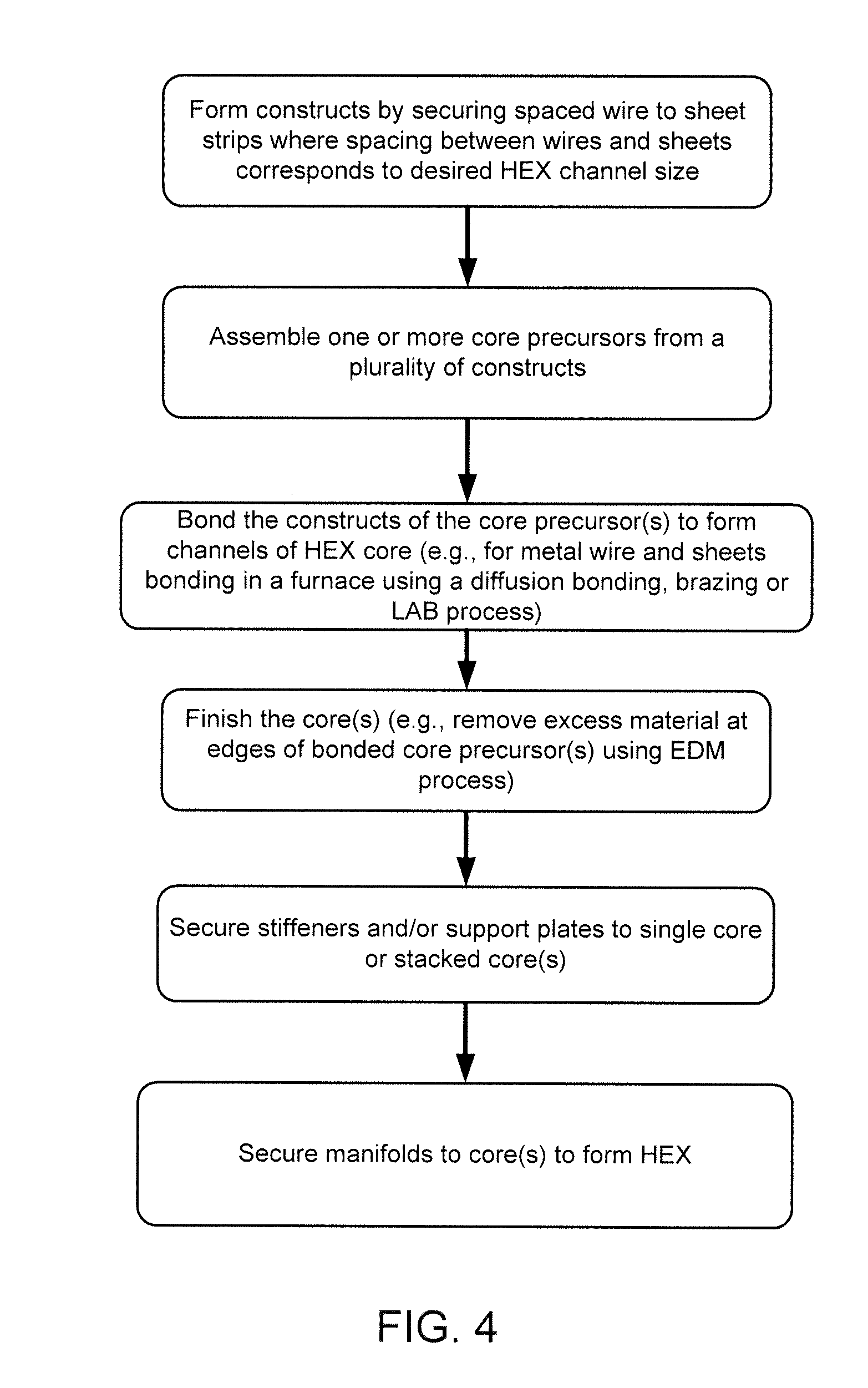Microchannel Heat Exchangers and Reactors
a microchannel heat exchanger and reactor technology, applied in the direction of manufacturing tools, soldering devices, lighting and heating apparatus, etc., can solve the problems that the delicate nature of tools and the high accuracy and precision required make microchannel heat exchangers in this manner expensive, and the current microchannel fabrication cost cannot be easily justified for low value heat exchange applications, etc., to achieve the effect of reducing manufacturing costs, promoting widespread utilization of microchannel heat exchangers, and reducing manufacturing costs
- Summary
- Abstract
- Description
- Claims
- Application Information
AI Technical Summary
Benefits of technology
Problems solved by technology
Method used
Image
Examples
example
[0091]Once bonding is complete, parts are unloaded and the channels of the core are formed. In one specific example, a building block core was manufactured as follows. A commercially available lamination machine was used for the roller press 50 in FIG. 5. The station 50 was set up to produce 4.0″×4.0″ sized constructs made from 0.025″ diameter 304SS round wire secured to 0.008″ thick 304SS sheet using Spunfab VI6010 adhesive. Along the sheet 40 fed from the roll 34 the round wire 30 wires are equally spaced at 0.150″ edge-to-edge distance from each other, except at the two edges of a laminate where flat rectangular ribbons of 0.025″×0.200″ cross-section are used instead of wires. The wider ribbons at the edges of a construct ensure complete sealing of a cross-flow core during bonding. The 4.0″×4.0″ construct has channels formed by twenty wires and two flat edge ribbons. The constructs were placed into a frame much like that shown in FIG. 7 and then bonded using LAB according to the ...
PUM
| Property | Measurement | Unit |
|---|---|---|
| diameter | aaaaa | aaaaa |
| thickness | aaaaa | aaaaa |
| surface area | aaaaa | aaaaa |
Abstract
Description
Claims
Application Information
 Login to View More
Login to View More - R&D
- Intellectual Property
- Life Sciences
- Materials
- Tech Scout
- Unparalleled Data Quality
- Higher Quality Content
- 60% Fewer Hallucinations
Browse by: Latest US Patents, China's latest patents, Technical Efficacy Thesaurus, Application Domain, Technology Topic, Popular Technical Reports.
© 2025 PatSnap. All rights reserved.Legal|Privacy policy|Modern Slavery Act Transparency Statement|Sitemap|About US| Contact US: help@patsnap.com



